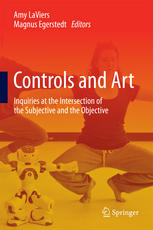

Most ebook files are in PDF format, so you can easily read them using various software such as Foxit Reader or directly on the Google Chrome browser.
Some ebook files are released by publishers in other formats such as .awz, .mobi, .epub, .fb2, etc. You may need to install specific software to read these formats on mobile/PC, such as Calibre.
Please read the tutorial at this link: https://ebookbell.com/faq
We offer FREE conversion to the popular formats you request; however, this may take some time. Therefore, right after payment, please email us, and we will try to provide the service as quickly as possible.
For some exceptional file formats or broken links (if any), please refrain from opening any disputes. Instead, email us first, and we will try to assist within a maximum of 6 hours.
EbookBell Team

4.8
64 reviewsDancing humanoids, robotic art installations, and music generated by mathematically precise methods are no longer science fiction; in fact they are the subject of this book. This first-of-its-kind anthology assembles technical research that makes such creations possible. In order to mechanize something as enigmatic and personal as dance, researchers must delve deeply into two distinct academic disciplines: control theory and art. Broadly, this research uses techniques from the world of art to inspire methods in control, enables artistic endeavours using advanced control theory and aids in the analysis of art using metrics devised by a systems theoretic approach.
To ensure that artistic influences are well represented, the individual chapters are focused so that they relate their contribution to the arts meaningfully and explicitly. Specially composed introductions set up the contributions either in terms of inspiration by artistic principles or their contribution to the arts through new analysis tools. To facilitate this, the majority of the chapters are authored jointly by experts in control theory and by artists, including dancers, choreographers, puppeteers and painters. Connections between controls and art then permeate the text so that these important relationships play a central role in the book.
Controls and Art surveys current projects in this area—including a disco dancing robot, a reactive museum exhibit and otherworldly music—and illuminates open problems and topics for research in this emerging interdisciplinary field. It will draw attention both from experts in robotics and control interested in developing the artistic side of their creations and from academics studying dance, theater, music and the visual arts with an interest in avant-garde means of production.